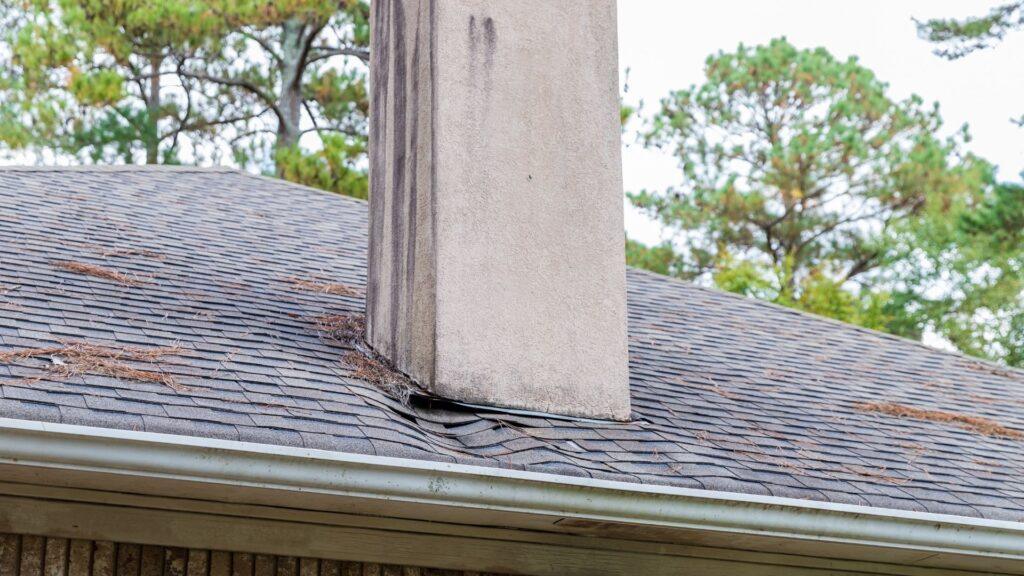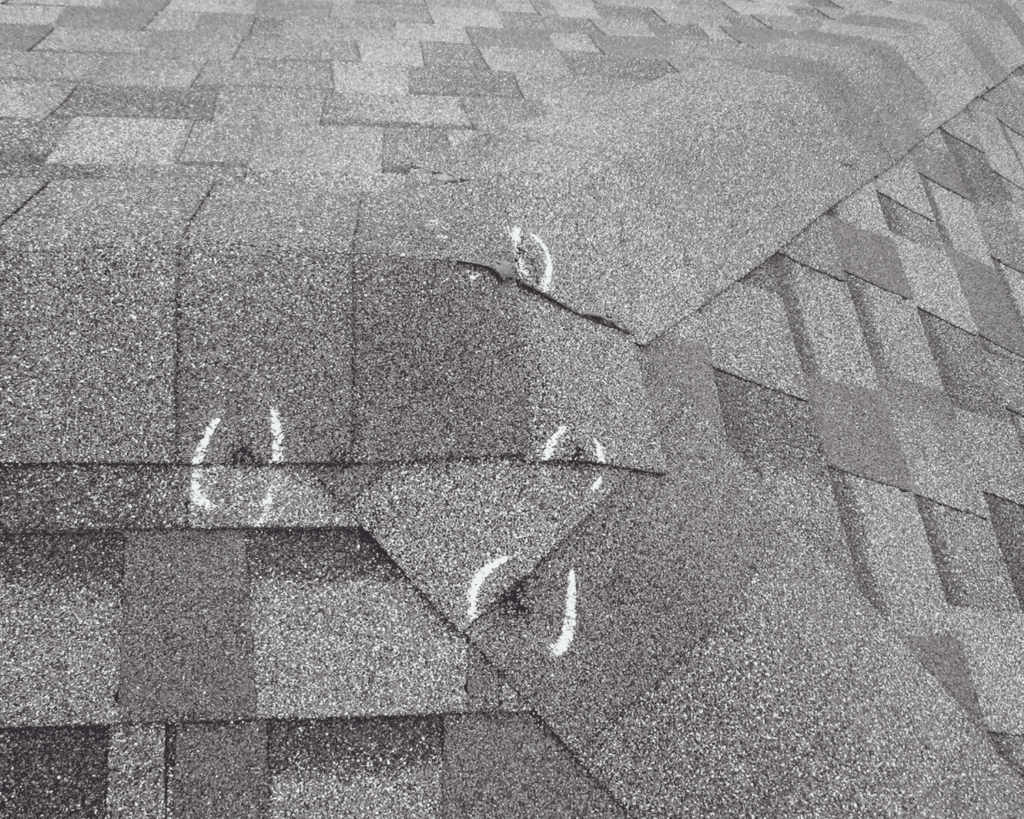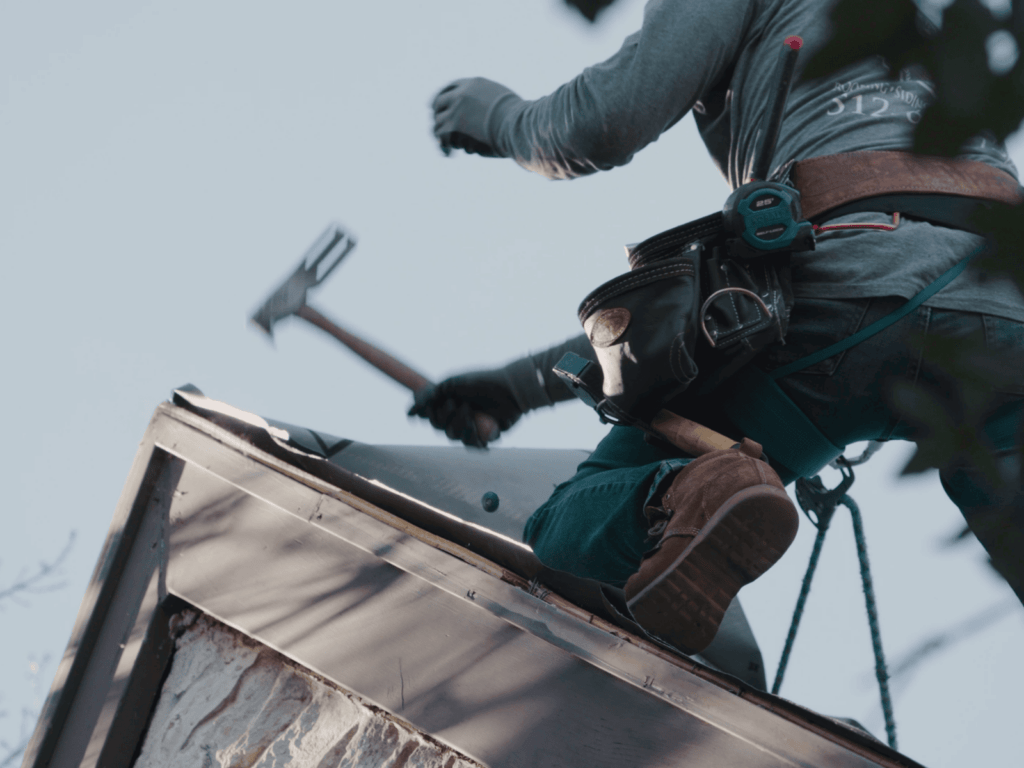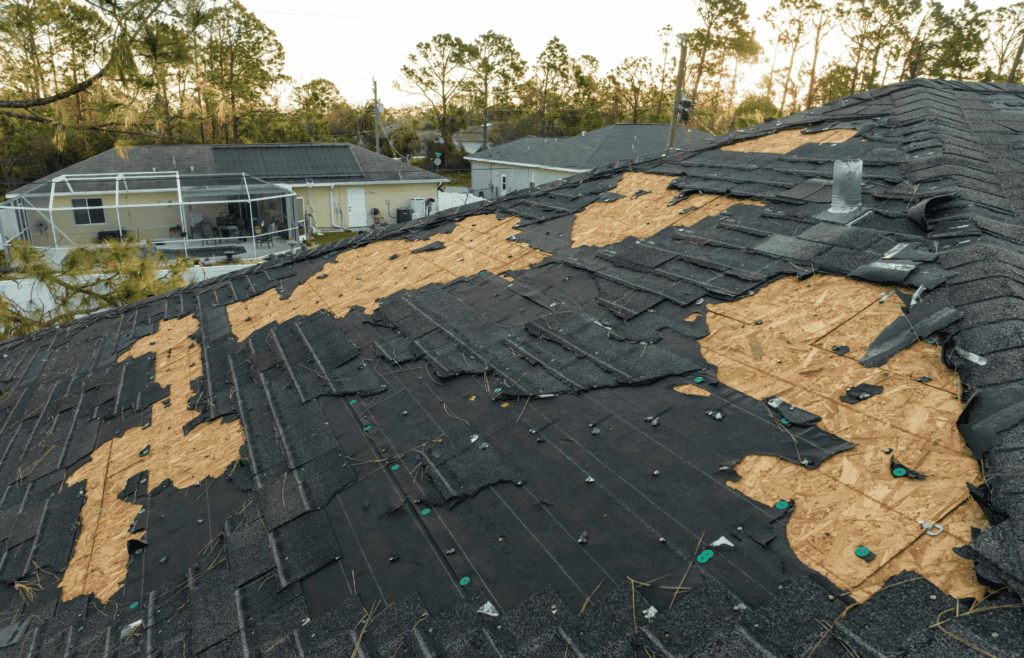Roof Leak Repair: Understanding the Consequences of Ignoring Roof Leaks
It’s easy to overlook a leaking roof, especially when everything in your home seems to be working just fine. But what many homeowners don’t realize is that even a small roof leak can quickly escalate into serious issues that threaten the entire structure of the home. Contrary to popular belief, a leaking roof isn’t just a minor inconvenience—it’s a warning sign. Left untreated, even the smallest roof leak can lead to extensive water damage, expensive roof repair, and dangerous health hazards.
By ignoring the need for roof leak repair, you’re taking a major risk with both your home and your family’s safety. Acting quickly at the first sign of a roof leak is crucial. In this blog post, we’ll cover why leaking roof problems shouldn’t be ignored and when it’s time to call in professionals for roof leak repair or a full roof repair.
The Risks of Ignoring a Leaking Roof
Don’t underestimate the dangers of putting off a roof leak repair. It’s not just about dripping ceilings or damp insulation. Moisture from a leaking roof creates the perfect environment for mold and mildew, which can seriously affect indoor air quality and worsen respiratory issues. Structural elements of your home—like wooden beams—can rot, weakening your home’s stability and leading to costly roof repair or even full roof replacement.
Water damage from a roof leak also threatens your home’s electrical system, increasing the chances of short circuits and fire hazards. And unfortunately, many of these risks go unnoticed until significant damage has occurred. That’s why scheduling immediate roof leak repair is essential. Ignoring a leaking roof today could mean facing a much more expensive roof repair tomorrow.

Factors Causing Roof Leaks and Environmental Exacerbations
Each factor that contributes to a leaking roof brings unique challenges, and understanding them is crucial for homeowners and property managers looking to avoid costly roof leak repair or full roof repair in the future.
Aging: As your roof ages, its ability to repel moisture diminishes. Shingles, tiles, and underlayment begin to break down, becoming brittle and prone to cracks from prolonged exposure to the sun, moisture, and temperature swings. For instance, asphalt shingles lose their protective granules over time, exposing the base materials to UV rays and water. Once compromised, these materials allow moisture to penetrate the structure, potentially leading to mold, insulation damage, and wood rot—all of which call for prompt roof leak repair or in some cases, total roof repair.
Poor Installation: Even top-quality materials can’t compensate for poor workmanship. Misaligned shingles, improperly sealed joints, inadequate flashing around vents or chimneys, and poorly pitched roofs can all create vulnerabilities. When rainwater pools due to installation flaws, it can seep into cracks and seams, leading to a leaking roof. These issues often go undetected at first but will inevitably result in the need for roof leak repair—or worse, full roof repair.
Storm Damage: Sudden roof leaks are frequently caused by harsh weather. High winds can lift or tear off shingles, and hail can puncture or dent roofing materials. Storm debris like tree branches may cause impact damage, cracking shingles or tiles and leaving the roof exposed. If heavy rain follows, the risk of interior water damage skyrockets. These incidents require urgent roof leak repair to stop a leaking roof from escalating into a major structural issue.
Wear and Tear: Regular exposure to sun, wind, rain, and snow wears down roofing components over time. Seals around penetrations—like skylights, chimneys, and vents—are especially prone to failure. As these seals age, they shrink and crack, allowing water to enter and form a leaking roof. Temperature changes also cause roofing materials to expand and contract, loosening seams and fasteners. These small, persistent issues almost always lead to the need for roof leak repair or eventually, complete roof repair if not addressed early.
In every case, proactive maintenance is key. Regular inspections and immediate roof leak repair are essential for extending the life of your roof and preventing small leaks from becoming larger, costlier roof repair projects.
Environmental conditions further accelerate damage, weakening roofing materials and increasing the chances of developing a leaking roof. Whether acting alone or in combination, these natural stressors highlight the importance of timely roof leak repair and professional oversight.
Excessive Heat: Intense and prolonged exposure to heat—particularly in warmer climates—can have a damaging effect on roofing materials. High temperatures cause materials like asphalt shingles, rubber membranes, and sealants to expand, which over time leads to warping, cracking, and a breakdown of structural integrity. UV radiation, in particular, plays a significant role in drying out and weakening the protective outer layer of shingles, reducing their flexibility and making them more prone to splitting.
Once cracks develop, rainwater has a direct route beneath the surface, initiating the process of internal water damage. Additionally, extreme heat can also contribute to the formation of blisters or bubbles in the roofing material, which eventually pop or break open under pressure, forming another weak point.
Humidity: In regions with high humidity levels, roofing systems are more susceptible to biological growth, including moss, algae, and lichen. These organisms thrive in moist environments and tend to develop on shaded areas of the roof where moisture lingers. As moss and algae grow, they trap moisture against the surface of the shingles or tiles, preventing the roof from properly drying out.
Over time, this persistent moisture retention can soften or rot roofing materials, particularly wooden structures or underlayments. In addition to increasing the risk of leaks, moss and algae can lift shingles slightly as they expand, creating further opportunities for water to seep in during rain events.
Wind: Wind is another environmental factor that can cause cumulative damage to a roofing system. Strong, sustained winds can loosen or detach shingles, tiles, or even flashing components, especially around edges and corners where suction pressure is greatest. In some cases, wind may even lift entire sections of roofing if the materials were not securely fastened during installation. Once a single component becomes dislodged, it exposes the underlayment or deck to the elements, dramatically increasing the roof’s vulnerability.
Subsequent rainfall can easily exploit these weak points, allowing water to bypass the outer barrier and infiltrate the structure beneath. Over time, repeated wind exposure—even at moderate speeds—can gradually wear down the roof’s resilience and compromise its long-term performance.
Together, these environmental stressors can cause even a well-installed and maintained roof to degrade prematurely. Regular roof inspections, seasonal maintenance, and prompt removal of moss or debris can go a long way in mitigating the impact of heat, humidity, and wind, helping extend the life of the roofing system and preventing avoidable leaks.

The Risks of Ignoring Roof Leaks
“Beware the Hidden Danger of Roof Leaks: Mold Infestation. Mold loves damp spaces like walls, attics, and roofs, growing quietly and unnoticed. But the threat it poses to your health is anything but subtle. Allergies, asthma, and weakened immune systems are particularly vulnerable to the respiratory problems and allergic reactions caused by mold spores. And it gets worse: certain molds, like black mold, release toxins that can be seriously harmful to both people and pets.
Symptoms can range from chronic fatigue to persistent coughs and irritation in the eyes, skin, throat, and lungs. Don’t let the problem worsen. Act fast to fix roof leaks and avoid the escalating costs and complications of mold remediation.
Structural Damage: The Impact of Leaks on Property Integrity
Protect your property and your health by addressing roof leaks promptly. Not only can these leaks weaken the structure of your building, but they can also lead to costly repairs and potential disasters. Prolonged water exposure can cause rot and deterioration in wooden components like rafters and joists, while steel supports and fasteners can corrode from water infiltration. The result could be sagging rooflines or even catastrophic roof collapse. Don’t let these issues escalate. Act now to safeguard your investment and ensure compliance with building codes.
Increased Energy Costs: The Financial Burden of Roof Leaks
Don’t let a leaky roof drain your energy and wallet! Roof leaks can seriously impact your home’s energy efficiency. When water seeps through the roof and saturates the insulation, it weakens its effectiveness, making it easier for heat to escape in the winter. This not only makes your home less cozy, but it also forces your HVAC system to work harder, driving up energy consumption and utility bills. The same problem occurs in the summer, with cooled air leaking out. By promptly addressing roof leaks, you can maintain insulation effectiveness and keep energy use efficient. This will save you money and make your home more eco-friendly.
Protecting Your Property from Roof Leaks
Regular inspection and maintenance of your roof are vital for early detection and prevention of leaks that can lead to extensive property damage. Here’s how to be proactive:
- Routine Maintenance: Schedule regular roof inspections and maintenance to catch potential issues before they escalate. A professional roofer can identify and rectify trouble spots such as damaged shingles, worn sealant, or loose flashings. It is recommended to have your roof inspected at least twice a year, especially after severe weather conditions.
- Clean Gutters and Downspouts: Ensure gutters and downspouts are free from debris that can cause water to back up and potentially seep into your property. Check and clean them regularly, particularly during fall when leaves are likely to accumulate.
- Trim Overhanging Tree Branches: Trees that overhang your roof can cause abrasion and damage to roofing materials and can provide a bridge for rodents that may damage the roof structure. Keep branches trimmed to prevent such risks.
- Improve Attic Insulation and Ventilation: Proper insulation and ventilation in your attic can prevent the buildup of ice dams in cold climates and reduce the chances of overheating roofing materials in hot weather, both of which can lead to roof leaks.

Professional Repair: The Value of Expertise in Fixing Roof Leaks
Get the best results for repairing roof leaks by hiring a certified professional contractor. Unlike DIY solutions or unlicensed workers, a certified roofer has the training, experience, and tools needed to accurately and safely fix roofing problems. Say goodbye to temporary fixes – a professional will address the root cause of the leak to prevent future issues. Plus, certified contractors follow building codes and often provide warranties for their work, giving you legal and financial protection. By choosing a licensed professional, you also protect yourself from liability issues.
Trust their expertise to preserve your roof’s lifespan, safeguard your property’s value, and ensure your safety.
Replacing the Roof: A Lasting Solution to Persistent Leaks
Is your roof constantly leaking? Instead of endless repairs, it may be time for a total replacement. Don’t wait until your roof reaches the end of its life or repairs become too costly. Investing in a new roof not only ensures durability but also allows for the latest in weather-resistant materials and roofing technology. With a full roof replacement, you can say goodbye to all existing weak points and enjoy peace of mind in any extreme weather.
While it’s a significant investment, the long-term benefits, including increased property value and improved aesthetics, make it a worthwhile expenditure. Upgrade now and start enjoying a leak-free and efficient roof.

How to Identify Roof Leaks
Identifying roof leaks in their early stages is crucial to avoiding extensive damage and costly repairs down the line. A small, unnoticed leak can quickly escalate into structural deterioration, mold infestations, and compromised insulation. By staying vigilant and performing regular inspections, homeowners can spot warning signs before the problem worsens. Here are some of the most common indicators that your roof may be leaking:
Water Stains: One of the most visible signs of a roof leak is water staining on your interior ceilings or walls. These stains often appear as brownish or yellowish discoloration and may expand over time. Water stains can also form in irregular shapes and may indicate a slow, consistent leak. Even if the stain appears dry, it can still point to an ongoing issue, especially if it becomes darker or larger during or after rain.
Dripping Sounds: Unusual sounds, particularly dripping or trickling water in the attic or walls, can signal a leak. These noises might be subtle and only noticeable during or immediately after rainfall. While it might be tempting to dismiss them, such sounds are often early indicators of moisture entering your home and should be investigated promptly.
Mold and Mildew Growth: Moisture from roof leaks creates a perfect environment for mold and mildew to flourish. These can develop in the attic, on ceilings, or along the edges of walls, often accompanied by a musty odor. Mold not only indicates a leak but can also pose serious health risks to occupants, especially those with allergies or respiratory issues. If you notice dark patches or fuzzy growths on surfaces inside your home, it’s time to check the roof.
Damaged or Missing Shingles: A routine visual inspection of your roof can reveal damage that may be the source of a leak. Look for shingles that are cracked, curled, blistered, or entirely missing. These compromised areas are weak points where water can easily breach the roofing system. Pay extra attention after heavy winds or storms, as extreme weather often causes shingle damage.
Debris in Gutters: Roofing materials, especially asphalt shingles, are coated with protective granules. Over time—and especially as shingles age or become damaged—these granules may come loose and accumulate in your gutters. An excessive amount of grit or debris in the gutter system is a red flag that your shingles are deteriorating and may no longer be effectively shedding water.
Sagging Roof Deck: If the roof deck beneath your shingles or tiles appears to be sagging or uneven, it’s a sign of prolonged water exposure. This structural deformation typically results from moisture absorption that weakens the wood or other decking materials. You may notice this from inside your attic, where areas of the roof sheathing look warped or feel soft to the touch. Sagging can compromise the structural integrity of the roof and should be addressed immediately.
By being proactive and watching for these warning signs, homeowners can catch roof leaks before they escalate into serious damage. Scheduling annual roof inspections and reacting quickly to any signs of trouble is the best way to preserve your home’s structural integrity and avoid costly repairs.
Maintaining a strong and watertight roof is vital for your property’s overall structure, comfort, and energy efficiency. By following a regular maintenance routine, keeping an eye out for signs of water damage, and addressing issues promptly, homeowners can prevent small problems from turning into expensive and dangerous situations. When repairs are needed, it’s important to hire certified professionals to ensure safe and high-quality work.
And if a roof replacement becomes necessary, it’s a wise investment that will protect your property’s integrity and value for years to come. Remember, your roof is the first line of defense against the elements for your home – take good care of it to keep everything underneath safe and sound.
Posted in